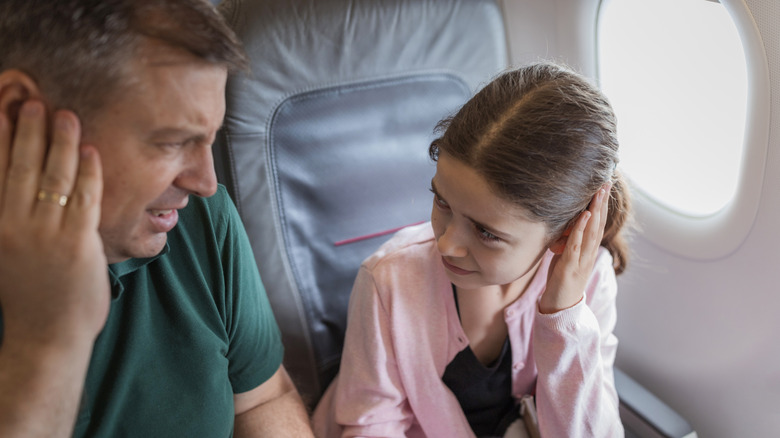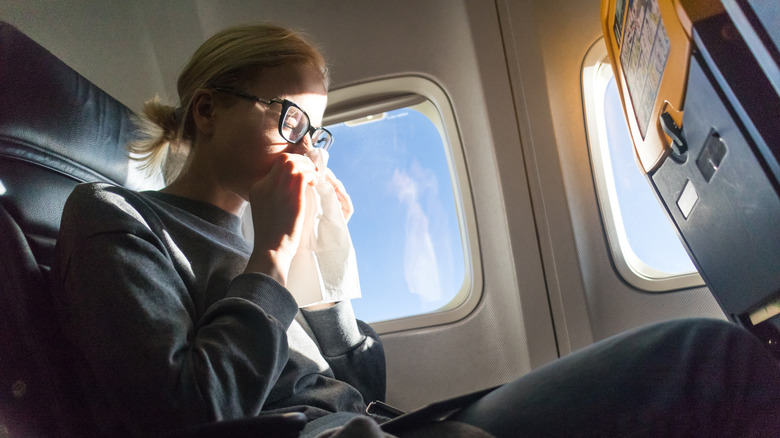The Clever Hack A Flight Attendant Uses To Deal With Ear Pressure After So Many Flights
Getting on an airplane and flying to a new destination has the potential to be an exciting start to your vacation. It can be a chance to relax before touching down or a thrilling experience for children, filled with new sights, sounds, and sensations. Unfortunately, not all sensations associated with flying are pleasant, and one that isn't fun for anyone who's experienced it is increased pressure in the ears. As a flight attendant for nearly 10 years, I'm very familiar with this particular feeling and how it can be distracting at best, and potentially painful at worst. Luckily, there is a technique called the Valsalva maneuver that can help.
The Cleveland Clinic defines ear barotrauma, commonly called "airplane ear," as the middle ear being suddenly affected by a change in pressure. While this occurs on flights due to air pressure, it can also happen in elevators and even in the water. If you plunge to the bottom of a pool that's deep enough, or go scuba diving, you may experience a sensation similar to your ears popping on a plane. The Valsalva maneuver helps by moving air into the eustachian tubes and middle ear, which will help fix the difference caused by changing cabin pressure. All you have to do is pinch your nose, close your mouth, and blow lightly. Be sure not to blow too hard, as too much pressure could cause damage to your eardrum.
Changing cabin pressure on an airplane during both takeoff and landing can have all kinds of different effects on your body, even making it more likely that you'll need to pass gas. And while there's not much anyone can do to affect the changing air pressure itself, there are some things you can bring with you that may help with ear discomfort when the Valsalva maneuver isn't enough.
What to pack in your carry-on to help with ear pressure
Every flight attendant has tips and tricks for efficient packing, and luckily, the things you need to help with handling ear pressure won't take up much space. If I'm already feeling any kind of sinus pressure, I may take an over-the-counter nasal decongestant before my flight. The next thing I do is make sure my carry-on is outfitted with the things I'll need to battle ear pressure while the plane is in the air.
When it comes to packing, I always begin with what is probably the most essential travel item of all: water. Although you can't bring it through security, you can either fill a reusable bottle at a hydration station or purchase it once you've passed the security checkpoint. It's a good idea to do so, because while your flight attendant is happy to get you water once you're in the air, they may be too busy to provide it before the plane takes off, and swallowing (as well as yawning) as you take off and land can help relieve ear barotrauma. The water is especially necessary for children, who likely won't swallow enough to relieve symptoms without a drink. Chewing can have a similar effect, so my next tip is to purchase a pack of gum before your flight.
Another item you won't see me travel without are tissues. Lightly blowing your nose will help with built-up pressure, but similar to the Valsalva maneuver, be sure to do it gently. Lastly, while I can't wear them when I'm working, if I'm traveling as a passenger, a good pair of earplugs helps to round out the arsenal. Wearing them can contribute to maintaining equal pressure and prevent additional pressure from building.

